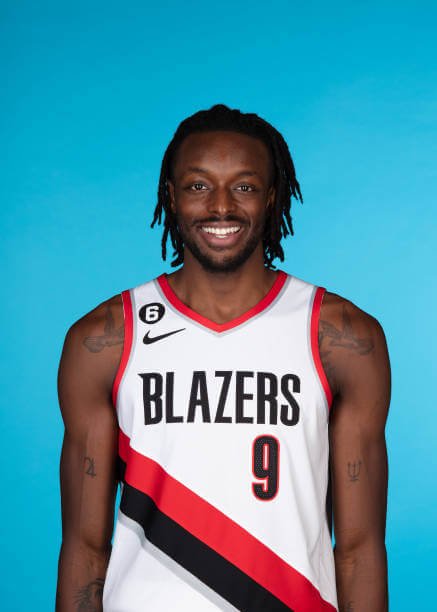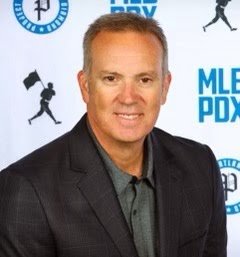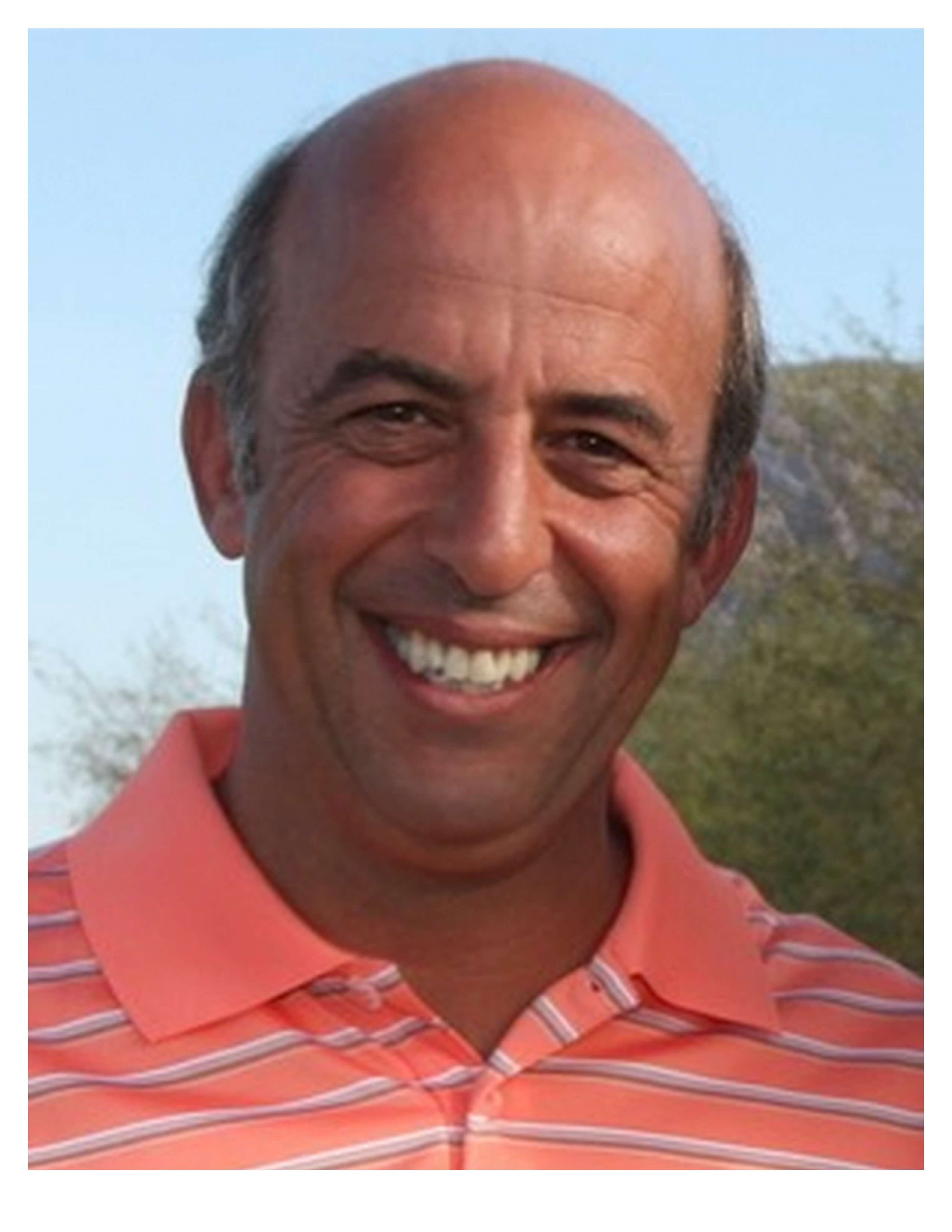On Jerami Grant, Gaylord Perry, Portland Golf Classic, MLB to PDX , Bol Bol and the Heisman …
Updated 12/9/2022 9:20 PM
Bouncing things around as we head to the holidays …
• Bob Robinson, The Oregonian’s beat writer during the Trail Blazers’ 1977 championship season, reminds me of the opinion of an anonymous scout on the 2022-23 Blazers in Sports Illustrated’s preseason issue:
"I'm less enthusiastic about the Blazers adding Jerami Grant than most. I just don't think he's very good. Portland probably felt the move would help entice Damian Lillard to stay. … Anfernee Simons and Lillard are both big-time scorers and ball-handlers. Maybe Portland is a little better this year, but probably it's about the same."
Could the scout really have meant “a little better” than last season’s 27-55 tank-a-thon? If so, he’s not paying much attention.
As for Grant, that one didn’t age well, did it?
I fall into the category of not understanding what kind of a whopper Joe Cronin landed in the 6-8 forward, who averaged 22.3 and 19.1 points in his two previous seasons, but with lowly Detroit. Now on his fifth team in nine NBA seasons, he seemed like a vagabond who is good but not great.
Now 28 and in his athletic prime, the son of ex-Blazer Harvey Grant has been edging toward greatness this season. Though he is third on the team in scoring — Damian Lillard averages 25.8 in just a dozen games, and backcourt mate Anfernee Simons is at 24.7 — Jerami has been Portland’s most important player.
Grant ranks 20th in the league in scoring at 23.0 points, shooting .475 from the field, .461 from 3-point range (eighth in the league) and .778 from the foul line. He is terrific on 3’s, great on a short-range fall-away jumper and has enough handle that he can take a defender off the dribble. Grant is not a great rebounder (4.1), but small forward Josh Hart (8.5) makes up for that.
Grant is a willing passer and a plus defender, and he has been very consistent with his scoring. Going into Thursday’s game against Denver he is on a seven-game streak of 20 points or more, including 44 against New York, 33 vs. Utah and 32 on the Clippers. Grant has been in single figures only twice in 23 games.
Which leads me to wonder: Has there ever been a more well-rounded forward in Blazer history than Grant has been over the early part of the season?
Sidney Wicks? Kiki Vandeweghe? Rasheed Wallace? Maurice Lucas? LaMarcus Aldridge? Cliff Robinson?
Aldridge was an only average defender, but I’d put him at the top of the list as an overall player. Robinson was good in every category, if a little inconsistent with the outside shot. Wallace had so much raw talent, you wanted more.
It’s a good topic to debate over a beer at the sports bar. For now, we consider Grant a great find, with the potential to have his name mentioned with the aforementioned stars, and perhaps ahead of some.
•
Corvallis native Dave Roberts, who enjoyed a 10-year major league career, developed a relationship with the late Gaylord Perry (courtesy Dave Roberts)
Hall of Fame pitcher Gaylord Perry, who died last week at age 84, left a legacy that was uniquely fascinating.
No pitcher is more associated with the spitball than Perry, who won 314 games over 22 seasons and retired at age 45 in 1983. Dave Roberts got to know him well.
This Dave Roberts is not the one who manages the Los Angeles Dodgers, but he has a major league baseball resume of his own.
This Dave Roberts is a Corvallis High grad who played collegiately at Oregon and was the No. 1 selection in the 1972 MLB draft. Roberts went straight from college to the San Diego Padres, for whom he played for six years of his 10-year career.
Twice, Roberts was a teammate of Perry — with the Padres in 1978 and the Texas Rangers in 1980.
Roberts began his MLB career as a third baseman but learned to catch when he was sent down to Triple-A Hawaii in 1976. Roberts was Perry’s favorite catcher in 1978, when the 40-year-old right-hander went 21-6 with a 2.73 ERA to with the National League Cy Young Award. They were together again two years later in Texas, when Perry went 6-9 but with a 3.43 ERA.
Dave Roberts’ early career coincided with the end of that of Hall of Famer Willie Mays (left) courtesy Dave Roberts)
The spitball, Roberts says, was a bit of a ruse.
“Gaylord would throw the spitter maybe two or three times a game — when the game was on the line,” says Roberts, 70, now living in Fort Worth, Tex. “He liked to play mind games with the opposition so they would think he was ‘loading up’ the ball more often than he was.
“On the day before he pitched, he would stroll by the opposing team’s dugout prior to the game. He would have a giant tube of Vaseline in his pocket that he would conveniently drop on the ground, and then pick it up, making sure (the opponents) were watching. He did this without fail; it was a big joke to him.”
When Perry did through the spitter, he called it, never the catcher.
“He had a good spitter only on some days,” Roberts says. “He used to get the slick stuff by putting a little dab of Vaseline behind his right ear, so he would never have to go to his mouth to doctor the ball.”
Roberts calls Perry “the smartest pitcher I ever played with.”
“During the games that he pitched and I caught, he would have me sit on the bench beside him while our team was at bat,” says Roberts, who scouted for major league teams for 35 years before retiring in 2018. “We would talk about who was coming up to the plate in the next inning and how we were going to pitch them, based on how we pitched them in their previous at-bat. I got a real education from a master craftsman.
“He loved to pitch backwards. When he was ahead in the count, he would throw fastballs; when he was behind, he would throw breaking balls to keep hitters off-balance. He was likely to throw a 3-1 curveball or a split-fingered fastball on any count. He had such pinpoint control, he could throw any pitch on any count.”
Perry twice led the American League with 29 complete games in 1972 and ’73 with Cleveland, throwing 342 and 344 innings respectively, at ages 33 and 34. He won 20 games only four times but won at least 15 games 13 years in a row from 1966-78.
“He was a country-strong bear of a man,” Roberts says. “By the time I played with him, he was probably carrying an extra 35 pounds, but it didn’t seem to affect him. I remember a game in Texas. It was 108 degrees when the game started and still almost 100 when it ended. He went the whole way and threw a shutout. He was a practical joker on the days he wasn’t pitching, but on the day he pitched, he was like a big, old, mean grizzly bear.”
Roberts tells the story of a day late in the 1980 season when the Rangers were playing the Mariners in the Kingdome. A photographer was trying to get close to take a picture of Perry at the end of the bench in the dugout. Perry saw him and poked a bat at his lens and into his face. The photographer barked at him, calling him “old man.”
“In a flash, Gaylord was out of the dugout and into the photographers’ area and had this little pencil-necked guy pinned against the wall, with his face beet red and feet flailing two feet off the ground,” Roberts says. “A few teammates came in and pulled him off the guy as he dropped to the ground like a rag doll, choking and coughing.”
The next day, the Rangers were taking batting practice when two men in suits, sitting in the first row of the stands above the dugout, asked for Perry.
“Somebody figured out pretty quick they were there to serve Gaylord with some kind of lawsuit from the guy he choked the night before,” Roberts says.
Perry wasn’t pitching, so he hid out in the clubhouse during the game.
“After the game, the suits were standing right outside the clubhouse door,” Roberts says. “It was getaway day for us, so the dilemma was how were we going to get Gaylord out of the clubhouse and onto the team bus and then out to the airport for the flight to Texas that night.”
Dressed in street clothes, Perry climbed into a giant laundry cart and, covered with towels, wheeled out the locker room, “right under the noses of the guys trying to serve papers,” Roberts says with a laugh. Perry jumped into a waiting car, which took him to the Boeing airfield. The Rangers charter took off from SeaTac, swooped in to pick up Perry and then flew back to Dallas.
“I think Gaylord eventually got served with papers and had to go back to Seattle to appear in court during the offseason,” Roberts says, adding, “he was one of my favorite teammates. My baseball career was much richer for having known him.”
•
Mike Barrett, a managing partner for Portland Diamond Project, continues to work to bring Major League Baseball to Portland (courtesy Mike Barrett)
I get asked every now and again, “Does Portland Diamond Project still exist?”
The answer, says PDP managing partner Mike Barrett, is yes.
“We’re still going,” says Barrett, the former television voice of the Trail Blazers. “We have wrestled through a few different pieces of property (for a new stadium). That’s still a big goal, to get property locked up.”
PDP began in 2017 and gained plenty of traction in its bid to gain a Major League Baseball franchise — by relocation or expansion — for Portland. Barrett and ex-Nike executive Craig Cheek were the front men who in 2020 garnered an appointment for an audience with commissioner Rob Manfred and his MLB people in Portland.
Except it never happened. The riots in downtown Portland made it an undesirable place to visit and caused the city to lose momentum in its bid for a franchise.
“So much of the situation of social unrest, along with Covid, slowed everything significantly for us,” Barrett says.
Since then, Las Vegas has taken front stage as the place MLB is looking for its next franchise — possibly by moving the A’s from Oakland. A newspaper report from Las Vegas, however, says public money in some fashion would have to be included in building a new baseball stadium in the city. And that local officials, including the outgoing governor, said there was no appetite to offer taxpayer money for the potential project.
“I don’t think it’s a done deal (for Las Vegas),” Barrett says. “We put ourselves in a position to be a candidate (for a franchise). After what seems like a pretty long period of exploration, it feels like a reset, like we’re now coming out of it into things that are more definitive.”
The Tampa Bay Rays are in the early stages of a proposed new 30,000-seat, $1 billion stadium along with multi-use facilities surrounding, with housing, restaurants and a retail area. It looks like they’re not moving. And with Vegas the likely choice should the A’s move, I asked Barrett if expansion is Portland’s only real hope.
“I wouldn’t go there yet,” he says. PDP is not represented at this week’s MLB winter meetings, though, and the city is an afterthought right now in the minds of the commissioner’s office.
“We haven’t talked publicly recently because we found that was an easier way to sled,” says Barrett, who says the original two majority owners are still on board, “but we’ve also had a lot of interest from several different parties (in MLB ownership).”
My suggestion: Get a site, very soon. Announce plans to build a stadium somewhere outside the city. The private money is there, I’m told. If there is a state-of-the-art facility here to bargain with, MLB would be hard-pressed to ignore it.
Done right, it would provide a boost to the economy; envision what the Rays plan in Tampa, or “The Battery” in Atlanta. Governor-elect Tina Kotek would embrace it — well, not sure about that.
Portland sports fans have long thirsted for a second “Big Four” professional team. The major league season — from April to October — fits well with the region’s weather.
PDP hasn’t given us much hope lately, though, so no predictions here.
•
Former Oregon Duck Bol Bol has been impressive in his first season with the Orlando Magic
Bol Bol, we hardly knew you.
The 7-2 center played only nine games at Oregon during the 2018-19 campaign, averaging 21.0 points, 9.6 rebounds and 2.7 blocked shots, before embarking on his NBA career.
Now with the Orlando Magic after three seasons with the Denver Nuggets, the 23-year-old son of the late Manute Bol is taking off.
Through 25 games, Bol is averaging 12.5 points, 7.5 rebounds and 1.8 blocks in just 26.6 minutes and has made a believer of the Magic coaching staff, which includes former assistants Nate Tibbetts and Dale Osbourne. Bol has been starting for a team that is 5-20 and has lost nine games in a row.
Bol has been streaky, with four 20-point games and six double-doubles but also 10 games scoring in single digits. He is shooting .601 from the field, .413 from 3-point range and .771 from the foul line.
“It has been a little up and down with Bol, but what we are seeing is something I haven’t seen before — somebody with his height and skill set,” says Jeff Turner, Orlando’s TV analyst who played the last seven of his 10 NBA seasons with the Magic.
Bol played only 53 games in three seasons in Denver, “so he is like a young rookie, learning the game,” Turner says.
“Whether you’re a Magic fan or an NBA fan, you’re kind of in awe of what he’s able to do,” Turner says.
“For his height, he has such a soft touch around the rim. He has been really good in the mid-range with floaters and things like that. Defensively, he has an uncanny ability to block shots, not just at the rim but on the perimeter as well.
“Even though he is 7-2, he is not really a center. He plays more like a 2 guard or a small forward. Given that, the potential is really high. He would seem to have a huge upside, but I don’t know. We’re going to find out about his work ethic and how badly he wants to be really good.”
•
The AmazingCre Portland Classic has the same sponsor but a better date and a larger purse says Tom Maletis, a member of the board of directors for Tournament Golf Foundation, Inc. (courtesy Tom Maletis)
Only eight of the LPGA’s top 25 money-winners participated in the AmazingCre Portland Classic in mid-September at Columbia Edgewater Country Club. That number should significantly increase in 2023.
The 52nd running of the longest continuous tournament on the LPGA Tour has a better date on a more suitable calendar next season.
The Portland Classic moves up two weeks and will be held on Labor Day Weekend, from Aug. 28 to Sept. 3 at C-E. Portland will come the week after the Canadian Open in Vancouver, B.C. It’s a much better travel situation for the players than this year, when they went from Ohio to Oregon to Arkansas.
The purse has been increased from $1.5 million to $1.8 million. The first tournament in 1972, won by Kathy Whitworth, had a purse of $30,000.
And AmazingCre, a Korean-based sports apparel an equipment brand, will be back as sponsor for a second year.
“Everything is in better position than it was last year,” says Tom Maletis, the former president of Tournament Golf Foundation, Inc., and now on its board of directors. “The Solheim Cup has also been moved to two weeks after our event (Sept. 22-24 in Andalucia, Spain). It’s all systems go for us at this point.”
•
The Heisman Trophy reveal comes Saturday, and voters are sworn to secrecy on their ballots. But I can tell you a little about the process I use.
I don’t pay a lot of attention until midseason, when I compiled my short list of candidates. This year I had 10 players, including Pac-12 quarterbacks Caleb Williams (Southern Cal), Bo Nix (Oregon) and Michael Penix (Washington). Penix and TCU quarterback Max Duggan hit my radar about that time. The chances for Nix and Michigan running back Blake Corum fell because of late-season injuries.
I watched many games — at least one with all those on my list — the last two weeks of the season. Frankly, no player stood out as the one I had to vote for. Last weekend, Williams and Duggan both played well in defeat and Georgia’s Stetson Bennett shined in victory over LSU in the SEC championship game. North Carolina’s redshirt freshman QB, Drake Maye, had no chance in a 39-10 drubbing by Clemson, but I thought he played well, too.
Williams, Duggan, Bennett and Ohio State QB C.J. Stroud are the finalists to be on hand Saturday for the ceremony in New York City. I’ll find out the winner the same time as all of you.
► ◄
Readers: what are your thoughts? I would love to hear them in the comments below. On the comments entry screen, only your name is required, your email address and website are optional, and may be left blank.
Follow me on Twitter.
Like me on Facebook.
Find me on Instagram.
Be sure to sign up for my emails.








